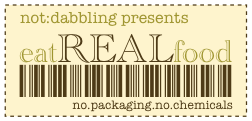Originally coined in 1932 by an obscure economist, it took the manufacturers a while to catch on. Make things so that they break or go out of style. Parse out slightly better, more desirable versions, so that the old version is no longer acceptable (Apple is the genius without par at this).
And we bought it. Literally.
Outsourcing to exploited workers in developing countries means it's cheaper to replace most appliances than it is to get them fixed. Because we don't make these things here anymore, the people who know how to make (and therefore fix) them have all died. As this happened more and more, the small repair shops that used to exist in every neighborhood started disappearing, so that now it is both expensive and time consuming to get the toaster fixed. (And who owns them? Immigrants, from countries where they still manufacture stuff.) Shop classes, where they taught you how to do simple repairs, disappeared from public schools, because everyone is going to law school now, and teaching people how to do useful stuff is racist and classist. Just drop into Sears or Walmart or Target or Walgreen's and get a new one. Old one goes into the landfill. Use the credit card! As Judith Levine says in Not Buying It, credit is the perfect capitalist solution to keeping wages low while ensuring that workers keep spending money.
Families lost their livelihoods, manufacturing in the US died, unions struggled, the earth filled up with junk, and we poisoned a generation or two in countries where there are no environmental or safety regulations.
But man, that new iPod Touch is cool, and my toaster has a digital display ensuring the exact quality of toastiness that I desire. If I get an iPad, there's probably an app that will get my toast going for me before I get up in the morning.
Cleverly, manufacturers have figured out Planned Obsolescence 2.0: it's obsolete by age alone, regardless of whether it still works. When was the last time you got rid of something because it broke? We don't hold onto our appliances long enough for them to break anymore. Consumer durable goods are considered to be things we use for three years or more, like refrigerators, cars and other large appliances. Not things that only last three years. Things that we replace every three years. Three years? I'm supposed to replace my fridge every three years? Yes, I am. I recently tried to get my stove top fixed. It was installed wrong, and one of the burners doesn't work. The repairman refused to fix it. Told me I needed a new one, because this one was from 2002. He actually refused the minimum repair fee rather than have to fix it. Mind you, it can be fixed. But he has bought so deeply into the idea of "new" and "better" that he actually chose not to be paid rather than to support my suspicious desire not to buy something when the thing I've got is fine.
It's a pathology. We need to keep our things. We need to stop replacing them before their time is up, or worse, just adding to the pile.
Because what they've really planned the obsolescence of is our free will and choice.
Oatmeal molasses bread
recipe adapted from the American Home All-purpose Cook Book
 2 c. milk
2 c. milk2 T. molasses
1 T. sea salt
2 T butter or shortening
1 package active dry yeast
1/2 c. warm water (barely cool on your wrist)
2 eggs
1 cup oats, ground to a fine meal in your food processor
4 c. whole wheat flour
2-2 1/2 c. white or bread flour
Scald milk (i.e. heat it to just shy of boiling, in saucepan or microwave). Cool to 100F/38C then add the shortening, salt, and molasses. Stir until it melts, then cool further to 80F/26C. I put it in the freezer to speed the cool down. Once it's cool, sprinkle the yeast onto the warm water, let it sit about 5-8 minutes. Beat the eggs into the cooled mixture, then add the activated yeast.
Stir in the oat flour until completely moist, then start adding the other flours about a cup at a time until it forms a stiff dough. Turn out onto a floured board and knead 5 to 10 minutes, or until dough is smooth and elastic. It will not feel as smooth as white bread doughs.
Grease a large bowl, and place the dough in it, rotating the dough a couple of times to make sure it is coated with oil. Cover with a damp towel and let it rise in a warm place until doubled in size. (I have had this take as long as 4 hours). Punch down, let rise again until almost double. Again, this can take anywhere from 30 minutes to a couple of hours. Grease two 9" loaf pans. Punch dough down, knead briefly to pop any air bubbles, divide in half. Shape each piece into a loaf and place in pans. Cover.
Let rise 50 to 60 minutes or until doubled. Bake at 375F for 25 to 30 minutes.
The oats give this bread a nice springy moistness, and the molasses its lovely golden brown color. Great for bread-and-butter or as a sandwich bread.











